Welcome to the Biophysics Research Group at the University of Pretoria!
See our new website here: biophysicsup.netlify.app.
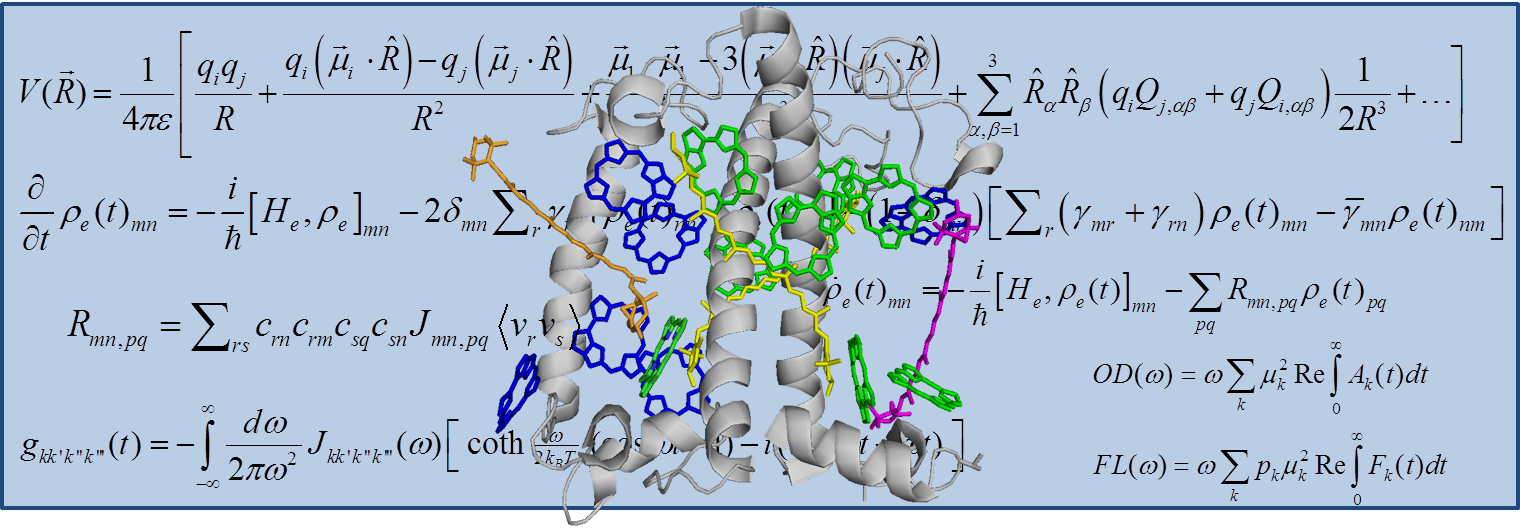
Welcome to the Biophysics Research Group at the University of Pretoria!
See our new website here: biophysicsup.netlify.app.
We investigate the energy and structural dynamics of light-harvesting molecular machines and how they can inspire the next generation of solar cells.
The light-harvesting protein complexes of photosynthetic organisms are amazing molecular machines. They use quantum mechanics to optimise their functions, a property that has captivated physicists for the past few decades. They also feature as light-sensitive nano-switches to maintain a delicate balance between their light-harvesting and photoprotective functions. There are a plethora of organisms performing photosynthesis and the light-harvesting complexes of each photosynthetic organism are different, sometimes entirely different! Despite the broad variety in structure and composition, the light-harvesting complexes have one thing in common: they absorb sunlight very effectively and transport the excitation energy to the photosynthetic reaction centre, where it is converted into chemical energy, the full process of which has a quantum efficiency of almost 100%. This property is already one great source of inspiration for finding green, sustainable energy solutions for humankind.
We want to understand the fundamental properties of these intriguing molecular machines, especially the transport and regulation of excitation energy. Our state-of-the-art spectroscopic techniques enable us to unravel many of the otherwise hidden dynamics of these complex systems. We also investigate to what extent we can improve their properties, using light, chemistry, and gold or silver nanoparticles as parts of our toolkit. Using photon correlation spectroscopy, we can get an indication of the “quantumness” of the light-harvesting complexes as a function of their complexity.

More realistic environments
Taking protein complexes out of their native environment is quite a reductionistic approach. How do we know they behave the same as in their native environment when they’re isolated and placed in a test tube? The natural environment is too complex to mimic entirely, so in our test tube the protein complexes will always experience a different environment. We are therefore developing experimental methods that will enable us to investigate the protein complexes in more realistic environments, whilst not sacrificing the level of molecular detail we’re after.
Artificial photosynthesis
Every second the earth is lavished with an enormous amount of energy from the sun. So why doesn’t the whole world switch immediately to solar energy resources? One major challenge is in the area of light harvesting. We need to think differently about light harvesting technologies. Photosynthetic organisms use cheap and clean materials for diverse applications in a remarkably fine-tuned, regulated and economic fashion. There are many remarkable principles that underlie their function. For example, photosynthetic light-harvesting complexes (which we may call ‘natural’ solar panels) use a ‘bad’ thing like disorder for a ‘good’ purpose. Our current solar technologies need a paradigm shift and learn from nature! Does this mean that our solar panels should be green? Not quite, but it means that we should apply the design principles gleaned from research on the ‘natural’ solar panels.
We use optical spectroscopy as the main experimental tool and strongly back the experimental work by theoretical modelling. To gain as much from the data as possible we’re pushing the resolution to the extremes:
1. Femtosecond laser spectroscopy
Using a state-of-the-art setup we can resolve and control processes on timescales down to tens of femtoseconds. With this resolution one can see how energy flows from one part of the system to another part.
2. Single-molecule spectroscopy
That’s right: we perform spectroscopy on one molecule at a time! This approach avoids all sorts of averaging processes, which reveals a lot of new information. We have built (from scratch) the first single molecule spectroscopy setup on the continent! See the articles here and here.

|
“The deeper I understand physics, the more fascinated I become by the molecular processes of life: their beauty, extraordinary detail, remarkable efficiency, robustness, variety and elegance.” |
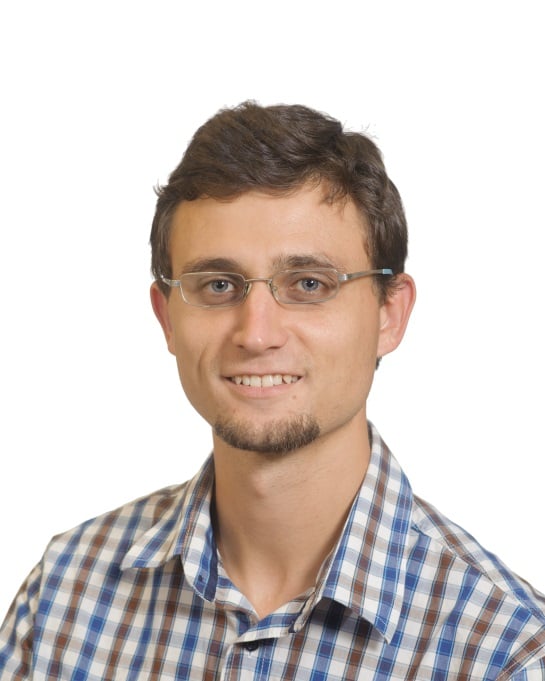 |
|
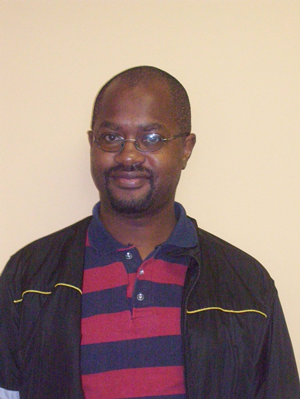 |
Cosmas Mafusire:
“I am working on the study of continuous-wave light propagation for application in image formation. I enjoy this work because it allows for a symbiotic relationship between theory and experiment which has resulted in the rapid development of computational optics.”
|
|
| Mamaru Bitew Alem:
“Biophysics and bioinorganic chemistry play crucial roles in understanding the phenomenon of photosynthesis. By studying the complex chemical and photophysical processes involved in photosynthesis, a researcher can gain insights into how plants and other photosynthetic organisms convert sunlight into chemical energy, essential for sustaining life on Earth. My research focuses on investigating and modeling the charge transfer states in phycocyanobilins (PCBs), the pigment in the major light-harvesting complex in cyanobacteria and red algae. A deeper understanding of the molecular mechanisms underlying optimal regulation of light harvesting using QM/MM simulations can potentially lead to the discovery of unforeseen chemical and biological phenomena with which efficient energy conversion would be attained for artificial light-harvesting complexes. By employing combined QM/MM simulations, I aim to gain a deeper understanding of the electronic, dynamics properties and quenching mechanisms in PCBs at different environments. The teamwork and collaboration of anyone in the biophysics group, and experts around would be greatly beneficial to contribute our share in endeavouring the development of light-harvesting complexes research.” |
||
| Sabera Millan:
“I am exploring the role of reactive oxygen species (ROS) on the photoprotection mechanism via NPQ using single molecule spectroscopy (SMS) along with other spectroscopic and electroanalytical techniques. The research findings help to figure out ways to intensify photosynthetic capacity and crop productivity. Additionally, my focus extends to examining the effects of SMALP polymers on light harvesting complexes at the single-molecule level.”
|
||
| Towan Nothling:
“During the process of photosynthesis, light energy is absorbed by pigment molecules that are embedded in protein complexes called light-harvesting complexes (LHCs). In plants, the LHCs, in turn, form part of two photosystems (called PSI and PSII). My research project focuses on understanding the energy flow and regulation, after photon absorption, in PSI, and in three separable LHCs (called CP29, CP24, and CP26) of the more complex PSII. I approach my research using a combination of experimental techniques and computer simulation. I enjoy setting up models to simulate molecular energy transfer events, as this process requires one to think critically in order to gain a fundamental understanding of our complex, beautiful world.” |
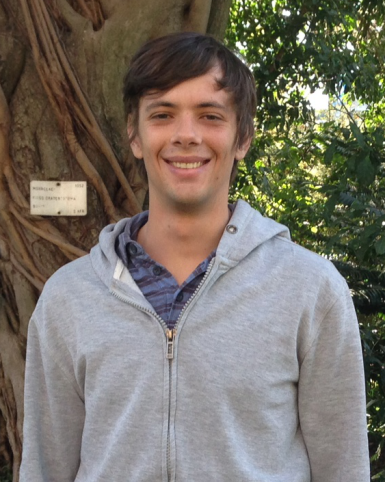 |
|
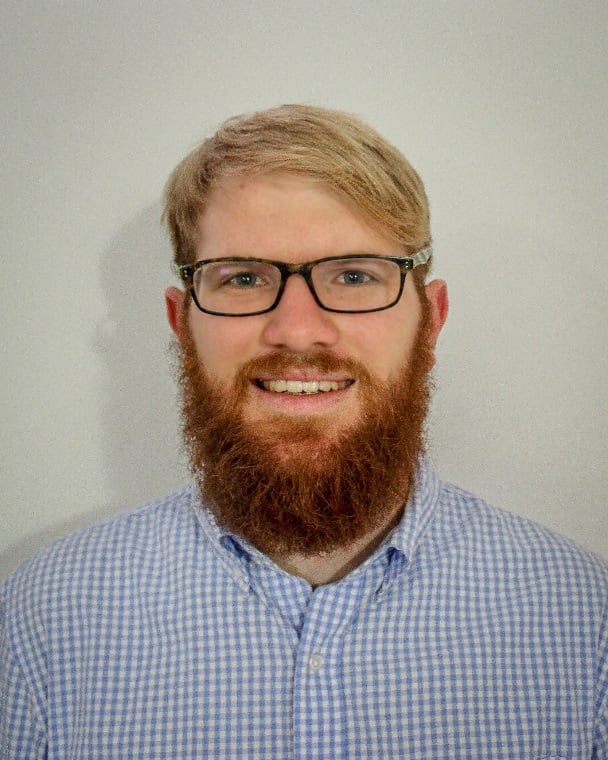 |
Bertus van Heerden: “My research focusses on extending the current single-molecule spectroscopy setup in order to perform single-particle tracking, allowing us to study freely diffusing photosynthetic proteins – in solution and eventually in a natural membrane. This is important as it brings us closer to performing single-molecule experiments in vivo. I am also interested in the theoretical side of single-particle tracking, as well as the use of photon correlations to study light harvesting. This includes picosecond correlations, like the quantum optical effect known as photon antibunching, as well as fluorescence correlation spectroscopy, which is used to study diffusion and dynamics such as protein aggregation.” |
|
|
Joshua Botha: “I am investigating how energy is transferred within and between photosynthetic proteins by using different spectroscopic techniques such as single molecule spectroscopy and fluorescence streak camera measurements. I’m also the main developer of the single molecule spectroscopy experiment that has been built at the University of Pretoria. Biophysics offers a platform to study fascinating processes using tools from a vast range of different fields of science. Multidisciplinary scientific endeavours, such as these, I believe is the way forward; working together to explore and develop exciting new avenues of science.” |
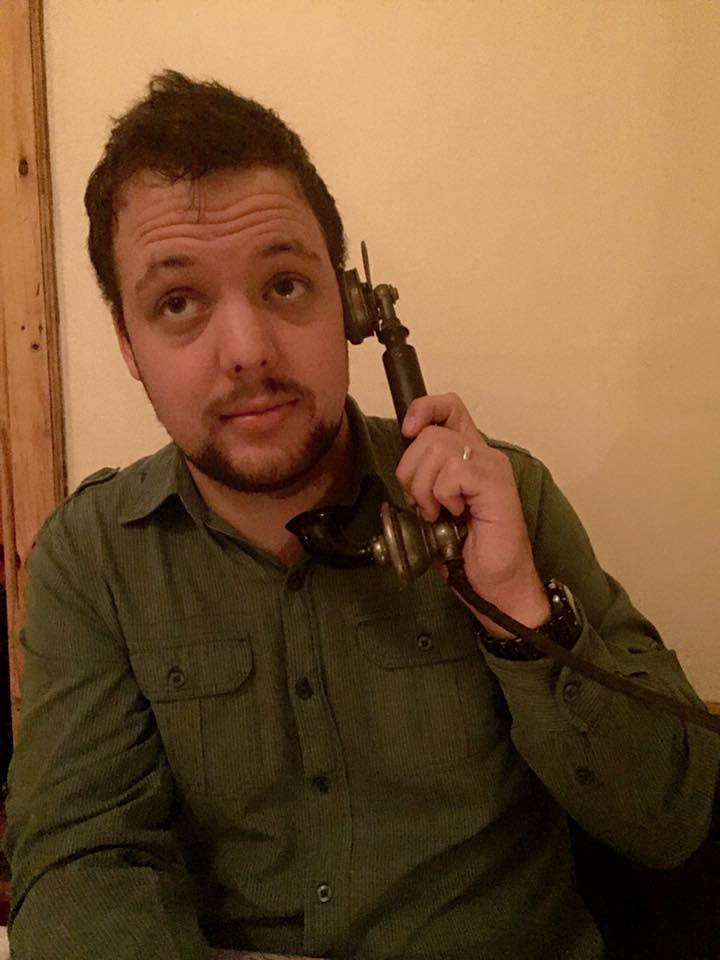 |
|
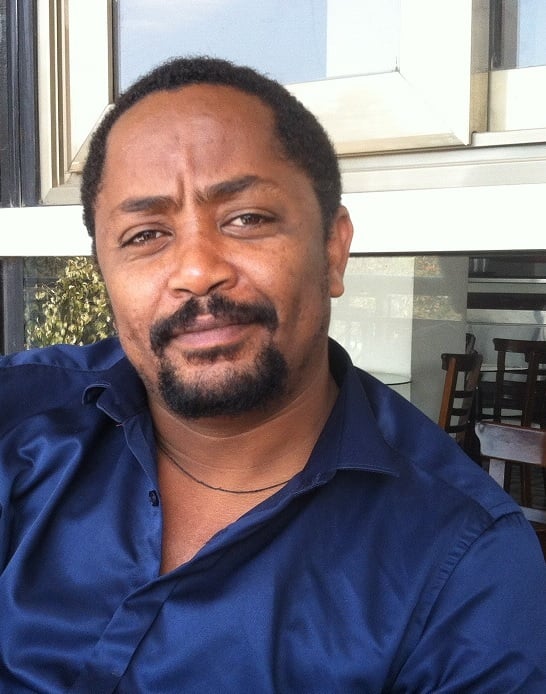 |
Tesfaye Assefa: “Photosynthesis is the fundamental mechanism by which almost all life forms get their energy from sunlight either directly or directly. An important property in photosynthesis, which is also the focus of my PhD project, is photoprotection. Photoprotection is performed by a complex set of mechanisms that organisms employ to prevent damage of their photosynthetic apparatus under conditions of high solar light intensities. A detailed study of the different kinds of photoprotection mechanisms will not only enhance our understanding of photosynthesis but will also contribute to the development of new bioinspired solar cells that realise artificial photosynthesis. I am studying photoprotection in the main light harvesting protein complex of cyanobacteria, known as phycobilisomes, using single-molecule spectroscopy.” |
|
| Leonato Nchinda:“Photosynthesis, an indispensable process, is the most important biological process on earth. By liberating oxygen and consuming carbon dioxide, it has transformed the world into the hospitable environment we have today. The light-harvesting protein complexes of photosynthetic organisms are intriguing molecular machines. They use the principles of quantum mechanics and switch between light-harvesting and photoprotective functions. The photoprotective state is established through a complex mechanism known as non-photochemical quenching (NPQ) during which excitation energy is thermally dissipated in a clean and safe manner. Since the photosynthetic light-harvesting process is dominated by the laws of quantum mechanics, precise control of the switch between light-harvesting and NPQ demands a technique based on quantum control; an approach that has not yet been utilised. In this light, I am using laser coherent control to observe and actively manipulate the course of physical and chemical processes immediately after photoexcitation of LHCII, the main light-harvesting complex of plants. Through the wavefront shaping of ultrashort laser pulses under the instruction of a genetic algorithm, the quenching process can be optimised or minimised. The 4f setup, which forms part of an ultrafast transient absorption spectroscopy setup, contains a Spatial Light Modulator (SLM), which will be used for shaping the pump pulse in phase and amplitude, while a genetic algorithm will be implemented to manipulate the laser pulses until an optimal pulse shape is achieved. At the end of this interesting adventure, we believe that the results obtained will be able to guide agricultural biotechnologies to develop high-light tolerant crops through genetic modification. Finally, with the advent of Biomimicry, a perfect understanding of the fundamental properties of these intriguing molecular machines (like LHCII), will serve as a great inspiration for finding green, sustainable energy solutions for our planet.”
|
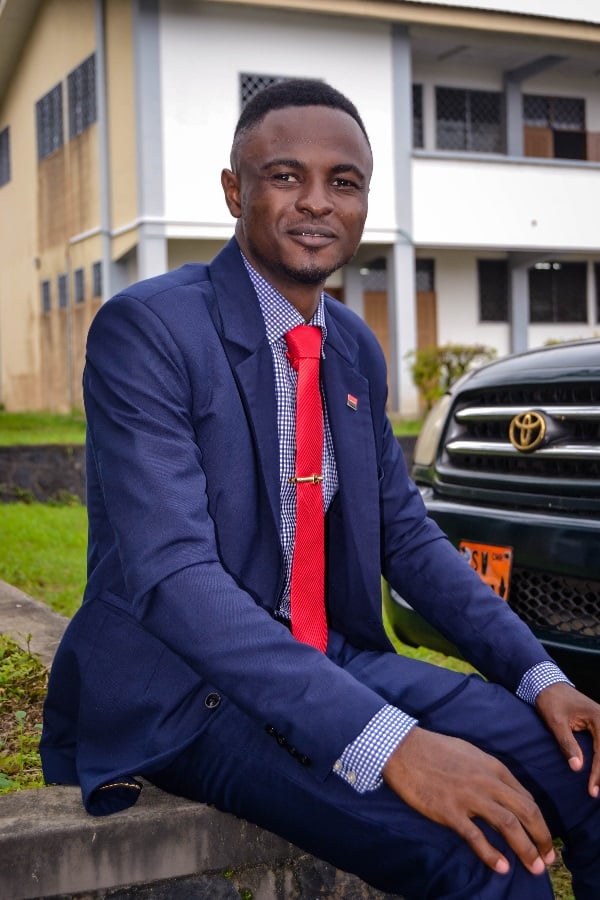 |
|
 |
Michael Lovemore “I passionately enjoy learning new things and making difficult tasks easier so my peers do not need to struggle anymore. This goes hand-in-hand with the fact that Physics is the best problem-solving degree. I enjoy solving problems, specifically related to method development in making laboratory methods more efficient and effective. My Ph.D. project is focused on Stark spectroscopy, an intriguing technique whereby a biological pigment-protein complex is probed through the addition of an external electric field, causing the spectral lines to split and shift. This gives a person some valuable information into the optoelectrical properties of the sample being studied, which could ultimately one day help us understand the complicated workings of photosynthesis and allow us to artificially reproduce its effect with its near 100% efficiency for sustainable energy development.” |
|
|
Francois Conradie “The abilities of photosynthetic light-harvesting complexes to respond to environmental stressors, |
||
|
Emma Gelderblom “The most important goal for plants, even more important than the efficiency of |
 |
|
 |
Sarah Burnett “Climate change has caused extreme heat waves to increase in intensity and frequency. This |
|
Dr Michal Gwizdala
Dr Luke Ugwuoke (PhD)
Dr Farooq Kyeyne (PhD)
Dr Hufiza Elnour (PhD)
Dr Alexander Paradzah (PhD)
Asmita Singh (MSc)
Justin Harrison (Hons and MSc)
Biophysics is much more than biology + physics. It’s in fact the confluence of several scientific disciplines: physics, biology, chemistry, mathematics, statistics, computer modelling, and engineering – all are integrated to solve some of nature’s big problems.
Personally, I like to put a stronger emphasis on physics (otherwise my physics colleagues tend to erroneously think I’m doing biology). This would be my definition: “Biophysics is the branch of physics that applies the methods and theories of physics to study biological systems. In short, biophysicists study the physics of living systems.”
But BPS prefers a broader definition.
For more information, have a look at our “World of Biophysics” booklet.
If you are new to the world of Biophysics, have a look at the following pages:
South African Biophysics Initiative
Careers in Biophysics (from the Biophysical Society) [pdf]
Biophysicist Profiles (from the Biophysical Society)
We strive to pursue a balanced mixture of methodology development, application of established techniques and challenging and slightly more adventurous new projects. You may choose between experimental and theoretical/computational projects.
Please contact Dr. Krüger for the availability of funding and a list of projects.
We particularly invite above-average students with a passion for science to apply. Please send Dr. Krüger your CV, academic record and two recommendation letters. If possible, come to our lab and introduce yourself in person.
A strong background in Physics or Physical Chemistry is recommended. Applicants with a different background may also be considered, but this needs to be strongly motivated. Some experience with lasers and/or chemistry is favourable but not obligatory. Computer programming is a requirement for most of the projects.
Copyright © University of Pretoria 2025. All rights reserved.
Get Social With Us
Download the UP Mobile App